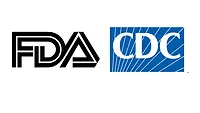FDA’s Taylor Visits China to Strengthen Food Safety Ties
Source: Food Safety News
 Today, 15 percent of America’s food supply is imported from other countries, including 80 percent of seafood and 50 percent of fresh fruit. An increasing amount of that food is coming from China, a country with a food safety track record that leaves many American consumers uneasy.
Today, 15 percent of America’s food supply is imported from other countries, including 80 percent of seafood and 50 percent of fresh fruit. An increasing amount of that food is coming from China, a country with a food safety track record that leaves many American consumers uneasy.
Part of the 2011 Food Safety Modernization Act (FSMA) grants the U.S. Food and Drug Administration (FDA) authority to verify that imported foods meet the same safety standards to which the domestic food industry is held. Michael Taylor, FDA’s deputy commissioner for foods and veterinary medicine, visited China last week to meet with food safety authorities in Beijing to discuss collaboration between regulatory systems.
Speaking with Food Safety News, Taylor acknowledged China’s recent history of food safety problems while expressing confidence about the country’s progress.
“There have been incidents, and those incidents undermine confidence,” Taylor said. “I think we’re invested in making sure the Chinese government understands — and it’s evident they understand — the importance of food safety. They’ve made a number of efforts to strengthen the safety of their food supply.”
With the passing of FSMA, the FDA has been tasked with developing strategies for ensuring that food importers are producing food at the standards expected of American companies. A big aspect of that is getting cooperation from the importing countries’ food safety agencies to conduct inspections and verify that producers are meeting safety requirements.
Of course, verification is a two-way street. While the U.S. is asking China and other countries to meet American expectations, China demands the same. Thanks to a similar directive recently issued by the Chinese government, goods sent to China from the U.S. and elsewhere need to meet its standards as well.
Looking for quick answers on food safety topics?
Try Ask FSM, our new smart AI search tool.
Ask FSM →
“Both domestically and for imports, there’s room for improvement when it comes to food safety verification,” Taylor said. “This is why implementation of FSMA is so important. There’s a lot of effort going into strengthening the system.”
Taylor said that the goal is to have China and other importing countries employing strategies similar to what the U.S. outlines with FSMA: Using inspections, sampling and testing to verify that a company’s food safety systems are actually working and preventing foodborne illness.
To do this, FDA has introduced the Foreign Supplier Verification Program to handle documentation and to perform its own inspections of importer facilities.
Taylor said that in the increasingly globalized economy, it’s important for FDA to have an established presence in the countries of major importers. As a result, the agency has offices in China, India, Europe and Latin America, with plans to bolster the team in China.
While in China, Taylor also spoke at the China International Food Safety and Quality Conference and Expo. His full speech from that conference is available on FDA’s website.
Photo of Michael Taylor speaking at the China International Food Safety and Quality Conference and Expo courtesy of FDA.








